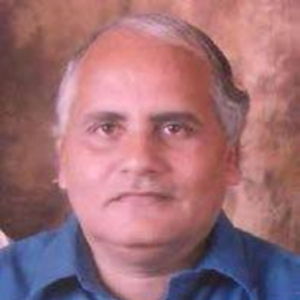Title : Cyclohexane oxidation catalysed by ruthenium complex at atmospheric pressure of molecular oxygen
Abstract:
The oxidation products of cyclohexane, via, cyclohexanol and cyclohexanone, are important intermediates in the manufacture of commercially needed polymers, nylon-6 and nylon-66. The main products formed during cyclohexane oxidation are cyclohexanol, cyclohexanone and adipic acid.. The existing commercial process for cyclohexane oxidation is carried out around 150 °C and 1–2 MPa pressure affording ~4% conversion and 70–85% selectivity to cyclohexanone and cyclohexanol over metal cobalt salt or metal-boric acid. Researches are focused for developing the catalyst systems for the selective oxidation of cyclohexane to cyclohexanol and/or cyclohexanone, potentially avoiding the formation of other undesired products. The functionalization of C-H bond in the selective oxidation of the lowest alkane, methane to methanol is although tough, yet it is catalyzed at the active site of a metalloenzyme known as methane mono oxygenase in presence of molecular oxygen. Here one atom of the dioxygen molecule is assimilated into the methane oxidation product methanol and the other forms water. In methane mono oxygenase, iron based complex catalyses the selective oxidation of methane to methanol. In line of these aspects, in our wide research programme to develop catalyst systems for the selective C-H bond functionalization of saturated hydrocarbons, Ru analogue of methane mono oxygenase based catalysts are developed and investigated in detail for the selective oxidation of cyclohexane to cyclohexanol and / or cyclohexanone. A Ru-EDTA–ascorbate complex catalysed oxdation of cyclohexane by molecular oxygen appreciably yielded cyclohexanol = 5.45%, cis- 1,3-cyclohexanediol = 2.56% and cyclohexanone = 0.18% at laboratory scale. The reactions are investigated in detail in order to have deep understanding of the involved oxidations: (i) Ru-EDTA catalysed oxidation of ascorbic acid, (ii) Ru-EDTA catalysed oxidation of cyclohexane, (iii) Ru-EDTA-ascorbate catalysed oxidation of cyclohexane and (iv) Ru-EDTA- ascorbate catalysed oxidation of cyclohexanol. The rate of oxidation of cyclohexane with the Ru(III)-EDTA–ascorbate system was faster than that of the Ru(III)-EDTA system in the absence of ascorbic acid. The present talk will involve the presentation of these oxidation reactions focussing on their catalytic, kinetic, thermodynamic and mechanistic aspects in detail.
Key words: Catalysis, Oxidation, Cyclohexane, Ruthenium, Molecular Oxygen, Kinetics



